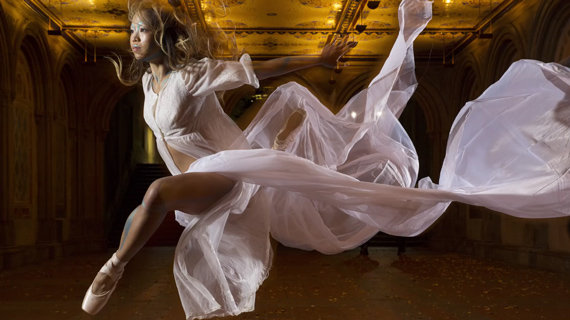Fast action photography is mostly associated with sports and wildlife. Shutter speed matters a lot in these genres. However, photographers can also use action as a creative source using strobes. Jay P. Morgan from The Slanted Lens discusses ways to freeze action using strobes:
There are two things that you can do in order to freeze action: use a fast shutter speed or use a short flash duration.
Technically, a strobe peaks up to its maximum output quickly and then tails off slowly. The graph of this phenomenon looks like a shark’s fin. Our purpose is to shorten that flash duration so that it gives a quick flash, freezes the action, and gives us a crisp image of the subject in action.
The Dynalite Baja B4 that Morgan demonstrates has a T mode, which is basically a shortened flash duration mode. However, any other strobe that has an IGBT (Insulated-Gate Bipolar Transistor) technology have the ability to produce shortened flash duration. It is important to note that by shortening the flash duration, we lose power and hence we lose some exposure as well. Hence, our aim should be to find the right point at which the exposure is sufficient to clearly light and freeze our subject.
- Use a shorter shutter speed and very short flash duration to freeze the action completely and cut off the ambient light completely. You will end up with a crisp subject and a black background.
- If you want to have the ambient light in your shot, use a slower shutter speed. This will blur any part of the subject that’s in motion. Make a creative choice and see what you prefer.
- If you want a crisp image of the entire subject along with some ambience, then you can use another light for the background and use a slightly faster shutter speed.
- If the ambient light is very low, don’t be afraid to bump up the ISO. Opening up the shutter for too long will make the subject blurry.
With all the creative choices to make, it’s up to you to decide how crisp or blurry you want your subject to be and how much of the ambient light you want to include in your photograph.
“Every real life situation has its own challenges. Tonight’s challenge was freezing the subject’s action and letting the ambient show itself.”
Like This Article?
Don't Miss The Next One!
Join over 100,000 photographers of all experience levels who receive our free photography tips and articles to stay current:








Leave a Reply